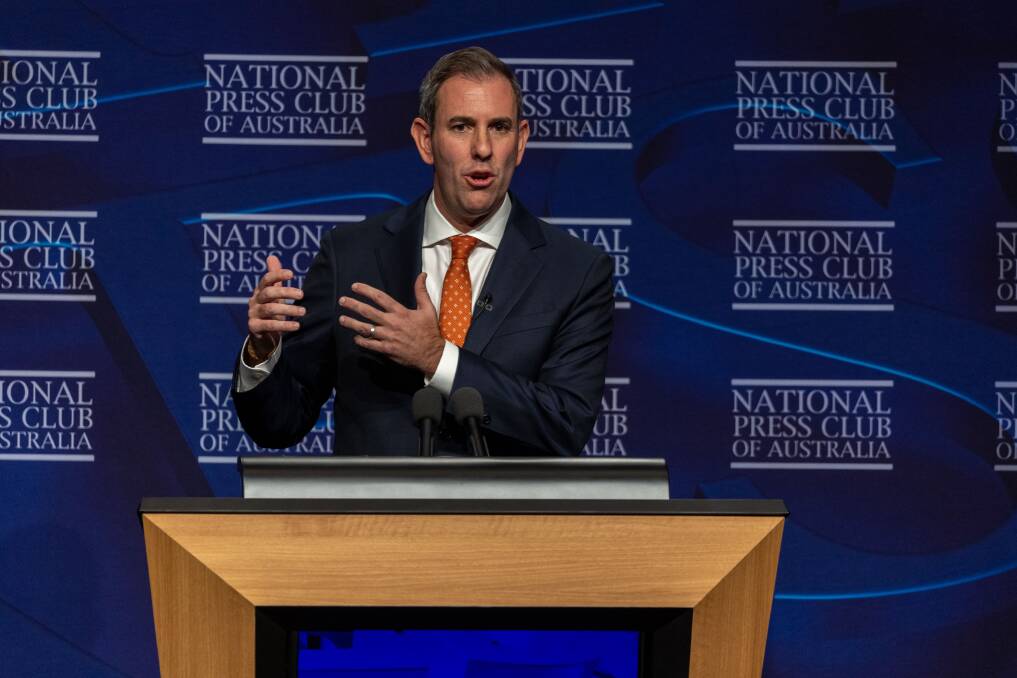May saw a significant shift in geostrategic energy dynamics, with Prime Minister Albanese and US President Biden agreeing on a Climate, Critical Minerals and Clean Energy Transformation Compact.
Subscribe now for unlimited access.
$0/
(min cost $0)
or signup to continue reading
If approved by Congress, Australia will be deemed a domestic supplier under the Inflation Reduction Act, making Australian companies and projects eligible to benefit from US$800 billion of decarbonisation capital.
But to take full advantage of the opportunities afforded by Australia's wealth of renewable energy and critical minerals, we must mobilise our own considerable domestic public financial capital to support national decarbonisation objectives, so as to de-risk and "crowd in" private investment.

Climate Energy Finance estimates that $100 billion of public capital would attract around $300 billion of private investment. Treasurer Jim Chalmers' announcement last month of a Sovereign Green Bond program starting in 2024 will be part of this, as will mandatory climate-related financial risk disclosures.
The Treasurer has made clear he considers national strategic interests to be a crucial - and lacking - consideration in Australia's institutional investment objectives, and declared he wants his legacy to be Australia's clean energy transformation. Here are five public finance reforms the federal government can implement to accelerate decarbonisation.
1. Reform the Future Fund to mandate long term national interest investments:
Unlike other sovereign wealth funds, the Future Fund does not have a national interest mandate. Its object and directions are wholly about annual financial risk-returns. A national interest direction would enable the Future Fund to invest long-term, patient capital in low carbon projects.
It would provide assurance to private investors, de-risking promising new technologies. It would support domestic equity ownership and hence domestic corporate tax payments.
2. Create a new public asset fund for critical minerals processing:
Australia's wealth of critical minerals and its potential for abundant, cheap renewable energy justify a new public asset fund, similar to that for medical research, managed by the Future Fund to facilitate on-shore processing.
Beyond the initial injection, additional capital for such a fund could be raised by the Government through capping the diesel fuel rebate and a Petroleum Resource Rent Tax contribution additional to the tweak announced in the May 2023 budget.
3. Reform benchmarks for superannuation to reward low-carbon investments:
Australian Prudential Regulation Authority (APRA) rules require funds to perform against a MySuper benchmark. These benchmarks currently favour incumbent firms: recently they became heavily skewed to fossil fuel companies as a result of temporary windfall gains due to Russia's war on Ukraine.
Superannuation investment is long term, intended to provide for members over decades. In a rapidly decarbonising world, the government should ensure performance benchmarks support low carbon investment. At the very least, they should not penalise such investments.
4. Issue Foreign Investment Review Board guidelines on Australian equity and consistency with the Paris Agreement:
The Foreign Investment Review Board (FIRB) examines proposed foreign investments in Australia against national interest criteria. A requirement for consistency with the Climate Change Act (2022) would send a clear signal to investors that Australia is serious about its contribution to global emissions reduction.
READ MORE:
Australian equity requirements should reflect that Australian resource companies generally pay their share of Australian taxes, returning benefits to the Australian people, while international companies operating here generally do not. FIRB guidelines for critical minerals could usefully set expectations for protecting Australia's national security, and increase global diversity of supply by avoiding excessive foreign control.
5. Ensure the Northern Australia Infrastructure Facility (NAIF) is aligned with Australia's Paris commitments:
As a result of the Climate Change Act, eligibility provisions for NAIF's $5 billion fund (soon to be expanded to $7 billion) were amended to include projects contributing to meeting Australia's emissions reduction commitments.
The current government's statement of expectations makes clear that ministers want the NAIF to support climate policy. NAIF now needs a clear updated investment mandate to screen out projects that make decarbonisation more difficult, including through exported emissions. Australian taxpayers should not be funding projects that worsen climate change.
NAIF's development objectives for Northern Australia must be consistent with the important goal of ensuring that that region - already the site of worsening climate-related disasters - remains safe for development and for its people, and deliver a strong message to proponents that clean energy and sustainable developments are good investments.
We can do more to leverage our massive energy transition investment opportunities, and to export decarbonisation through renewables-based processing.
These five steps will facilitate a further boost to public investment to crowd-in private capital, which will help secure the federal government's legacy in driving Australia's clean energy transformation.
- Janaline Oh, executive director of Diplomats for Climate Action Now, served as an Australian diplomat for 30 years to 2020.
- Tim Buckley is founder and director of independent think tank Climate Energy Finance.

